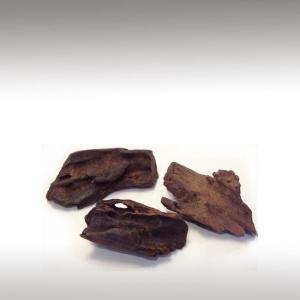
SANDALWOOD ESSENTIAL OIL (SANTALUM AUSTROCALEDONICUM) - ESSENTIAL OILS

BASE / GENERAL DATA
Information submited: March 12, 2014 Modified: March 22, 2018 By: OperaDreamhouse
Botanical Name: Santalum austrocaledonicum
Common Method of Extraction: Steam Distilled
Part Typically Used: Heartwood and roots
Color: Pale yellow
Consistency: Slightly viscous liquid
Perfumery Note: Middle/Base
Strength of Initial Aroma: Rich, soft, sweet, creamy, balsamic, smells like precious woods. The heart note is softer and creamier in aromatic texture than the Sandalwood from India and Sri Lanka.
In natural perfumery its application is almost universal as it serves as one of the finest fixatives known in almost all perfume types. It is notably used in high class florals, Oriental bases, precious woods accords, woody-floral bases, fougeres, chypres, sacred perfumes.
Santalum Austrocaledonicum typically grows 5 to 12 metres tall, and around 4 to 8 metres wide. The trees flower after 6 - 7 years, and fruit matures in about 3 months. The trees have gray bark, and short branches bearing light-green leaves. They are considered semi-parasitic in their early stages. Their roots drink the sap of their host plant.
Austrocaledonicum was discovered in 1840 on Pins Island, New Caledonia. In India, many temples were built with its fragrant wood. Some excerpts from the Bible make reference to the use of Sandalwood for the crafting of harps, lutes and railings for the Temple of Jerusalem, in the time of Solomon.
Sandalwood is still today very much used in Hindu ritualsand ceremonies. For instance, it enters in the composition of pastes used in the Temples of Shiva for embalming.
Sandalwood essential oil from New Caledonia is rich in Santalol, the constituent that gives Sandalwood its signature aroma.
The species Santalum Austrocaledonicum, not to be confused with Indian Sandalwood Santalum Album, grows in New Caledonia and Vanuatu. The essential oil distilled from the heartwood is sweet and woody, tinged with warm, milky notes.
Common Method of Extraction: Steam Distilled
Part Typically Used: Heartwood and roots
Color: Pale yellow
Consistency: Slightly viscous liquid
Perfumery Note: Middle/Base
Strength of Initial Aroma: Rich, soft, sweet, creamy, balsamic, smells like precious woods. The heart note is softer and creamier in aromatic texture than the Sandalwood from India and Sri Lanka.
In natural perfumery its application is almost universal as it serves as one of the finest fixatives known in almost all perfume types. It is notably used in high class florals, Oriental bases, precious woods accords, woody-floral bases, fougeres, chypres, sacred perfumes.
Santalum Austrocaledonicum typically grows 5 to 12 metres tall, and around 4 to 8 metres wide. The trees flower after 6 - 7 years, and fruit matures in about 3 months. The trees have gray bark, and short branches bearing light-green leaves. They are considered semi-parasitic in their early stages. Their roots drink the sap of their host plant.
Austrocaledonicum was discovered in 1840 on Pins Island, New Caledonia. In India, many temples were built with its fragrant wood. Some excerpts from the Bible make reference to the use of Sandalwood for the crafting of harps, lutes and railings for the Temple of Jerusalem, in the time of Solomon.
Sandalwood is still today very much used in Hindu ritualsand ceremonies. For instance, it enters in the composition of pastes used in the Temples of Shiva for embalming.
Sandalwood essential oil from New Caledonia is rich in Santalol, the constituent that gives Sandalwood its signature aroma.
The species Santalum Austrocaledonicum, not to be confused with Indian Sandalwood Santalum Album, grows in New Caledonia and Vanuatu. The essential oil distilled from the heartwood is sweet and woody, tinged with warm, milky notes.

SPIRITUAL PRACTISES DATA
Information submited: January 29, 2015 Modified: March 22, 2018 By: OperaDreamhouse
Sandalwood essential oil has been used in cultural and spiritual
ceremonies for centuries. Opens Sacral Chakra. Good for meditation,
astral projection, manifesting, blessings, house cleansings and
releasing the past. Dispels negativity.
Evolution of the spirit is achieved through awakening the Kundalini and taming sexual energies.
On an energetic level, Sandalwood aligns and balances the center of Sacral Chakra's feminine energies with the masculine energies of the Root Chakra. This alignment frees up the Kundalini's reserve of energy, wrapped around the base of the spine. By liberating this energy, it becomes able to take root and to connect with the heart.
Sandalwood calms the fire of sexual desire and brings a feeling of completeness, which eases the process of learning the meaning of True love.
Helps visualization and meditation by slowing down “mental hyperactivity”. It also reinforces the link between the Crown and Base Chakra. The smell of sandal wood brings a sense of exotic sensuality and calmness.
Sandalwood is used in the preparation of spiritual and self-healing work.
The tree's fragrant wood has been used since time immemorial in religious rituals. Buddhists view it as one of the three fundamental incense materials, along with Cloves and Agarwood.
When used in aromatherapy it induces mind-focussing and emotion-calming effects.
Evolution of the spirit is achieved through awakening the Kundalini and taming sexual energies.
On an energetic level, Sandalwood aligns and balances the center of Sacral Chakra's feminine energies with the masculine energies of the Root Chakra. This alignment frees up the Kundalini's reserve of energy, wrapped around the base of the spine. By liberating this energy, it becomes able to take root and to connect with the heart.
Sandalwood calms the fire of sexual desire and brings a feeling of completeness, which eases the process of learning the meaning of True love.
Helps visualization and meditation by slowing down “mental hyperactivity”. It also reinforces the link between the Crown and Base Chakra. The smell of sandal wood brings a sense of exotic sensuality and calmness.
Sandalwood is used in the preparation of spiritual and self-healing work.
The tree's fragrant wood has been used since time immemorial in religious rituals. Buddhists view it as one of the three fundamental incense materials, along with Cloves and Agarwood.
When used in aromatherapy it induces mind-focussing and emotion-calming effects.

MEDICINE / HEALTH DATA

BEAUTY / COSMETICS DATA

FOOD / COOKING DATA
COMMENTS
No comments.
Newest mixtures containing Sandalwood Essential Oil (Santalum Austrocaledonicum):

Essential Oil for the Sixth Chakra (Third Eye Chakra - Ajna)
March 4, 2015

Essential Oil for the First Chakra (The Root Chakra - Muladhara)
February 23, 2015

Cleansing mask for sensitive skin
February 13, 2015


